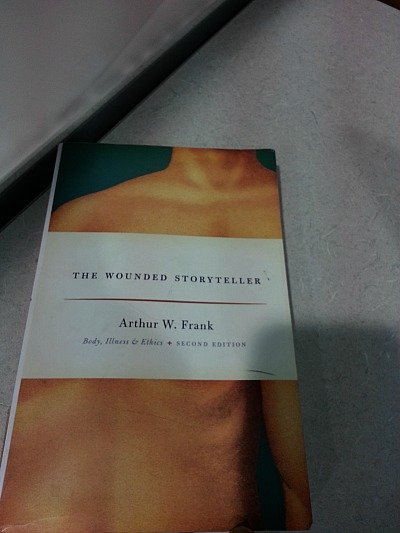- Home
- Think Pieces
- Literary Analysis
- Four Statements Dance Bomba
Four Statements on the Dance, Grace and Clarity, and Bomba
In "Four Statements on the Dance", John Cage talks about grace and clarity in relation to music. Let's see how those concepts come together when we look at Bomba music.

In “Four Statements on the Dance”, John Cage refers to an advantage of the modern dance – the ability to have a “simultaneous composition of both dance and music” (Cage, 1961, p. 88). Cage also refers to the concept of grace and clarity and how a clear rhythmic structure is often lacking in modern dance. These three aspects are shortfalls of modern dance, and if they were addressed, it would increase the potential of modern dance to be as long-lasting as many of the art forms that are found in Asia, Africa and South America.
Cage explains that dancers make use of simple percussion accompaniments to punctuate their dance movement (p. 88). However Cage points to a need for dancers to give the music its own “special part in the whole composition” (p. 88). Bomba music from Puerto Rico, seems to fit in with Cage’s expectations of how music and dance should relate to one another. Bomba music arrived in Puerto Rico from West Africa through the importation of slaves to Puerto Rico (Music of Puerto Rico, 2015, Bomba, para. 1). Bomba music is the perfect example of the simultaneous composition of both dance and music. In contrast to many modern pieces where music accompanies the dance, the base of Bomba is the music, and dance is integral to the music.
In Bomba music, the dancer creates gestures and the drummer accommodates these gestures, a reversal of what we are used to seeing in Western music (para. 5). In modern Western dances, the music is normally identical to the dance, since the dance has been punctuated by the music. However in Bomba, the music is cooperative with the dance. Therefore, one is able to enjoy the music and the dance (each are important features in their own right), that have been united in the performance.
When he talks about grace and clarity, Cage mentions how modern dance is not a firmly established art practice, but how it accepts influences from “more rooted art manners” (Cage, 1961, p. 89). As a result of this, modern dance has become largely impersonal. Bomba music, stands in contrast to the vast majority of modern dances as the dance itself embodies the presence of the dancers. The style of a Bomba performance depends on the personality of the dancer, and this is because the music is set to the pace of the dancer. Cage further notes the difference between the influence of style, and the idea of completely building a dance on personality (p.90).
Cage explains that if a dance is to be clear, it must follow music that is clear in its phrase structure (p.91). Ballet is an example mentioned within the text that demonstrates clarity in its rhythmic structure. Cage attributes the success of the Ballet to this clear rhythmic phrasing, for this clarity compensates for and has higher value than the “personality” of the Ballet (p. 90). When interesting movements, costumes and sets are removed from a dance, the dance should possess rhythmic clarity and strength for the dance to be successful.
Although Bomba embodies the personality of the dancer, it is a simple dance form like the Ballet. Moreover, just like the Ballet, the Bomba derives its strength from its rhythmic clarity, rather that its “prettiness and fanciness” (p. 90). In Ballet, “symmetry is maintained without question”, and in the Bomba, a clear rhythmic structure is maintained through the movements of the dancer and the synchronized drum beats (p .90).
Cage’s main thesis is that grace and clarity work together beautifully, although they are inherently opposed. Grace might be viewed as the opposite of clarity. After all, clarity appears cold and mathematical, whereas grace is warm and incalculable (p. 91). Yet, like the “body and soul”, grace and clarity are able to complement each other, even as grace works against the clarity of the rhythmic structure (p. 91).
Cage points to the effectiveness of the contrast between grace and clarity as seen in poetry. The most respected poets are admired, not for the directness of their arrangements, but for the ingenuity observed through imaginative occasional departures from the ratio of the metre (p.92). I agree with this viewpoint because I also appreciate poetry and songs that have a clear sense of rhythm that is balanced with the intertwining of anomalies that seem to deviate from the main body.
Cage’s deep wishes are that modern dance will “clarify its rhythmic structure, then enliven it with grace” (p.93). As has been mentioned, many modern dances lack originality by following patterns set by previous art forms, and thus they lack a definitive aesthetic. It is important for our modern dances to become strengthened by a balance of grace and clarity; in this way they will become timeless. I have personally observed that when a style or piece of music, has an original and strong rhythmic structure, that art form is preserved for years, to be enjoyed by future generations.
If modern dance continues to copy key features from previous originators, then it will continue to be unsustainable. One dance form will prove to be a fad, and become quickly replaced by the next unoriginal dance. Bomba music has been preserved from the 17th century down to our day, due to its uniqueness and perfect coupling of grace and clarity. There is undeniably a strong sense of aesthetic conveyed through graceful style of the dancer’s improvisation, matched with the clarity of the synchronised drumbeat.
References
John, C. (1961). Four statements on the dance. Silence: Lectures and Writings (pp.97-96). Middletown, CT: Wesleyan University Press.
Music of Puerto Rico. (2015). Bomba. Retrieved December 7, 2017, from http://www.musicofpuertorico.com/index.php/genre/bomba/
Thanks for reading! If you liked this content, share with a friend:
Recent Articles
-
5 Best Interview Preparation Courses and Classes Online
Apr 24, 24 05:24 PM
Hoping to ace your upcoming interview? Here are the best interview preparation courses online to boost your confidence and performance. -
5 Best Media Training Courses to Prepare You for a Media Interview
Apr 10, 24 05:37 PM
Preparing for an upcoming media interview? Here are the best online media training courses to equip you with the tools you need to succeed. -
5 Best Research Methods Courses and Certificates Online (2024)
Mar 27, 24 05:06 PM
Here are the best research methods courses online that enable students and professionals to learn at their own pace and earn a certificate in research methods.








